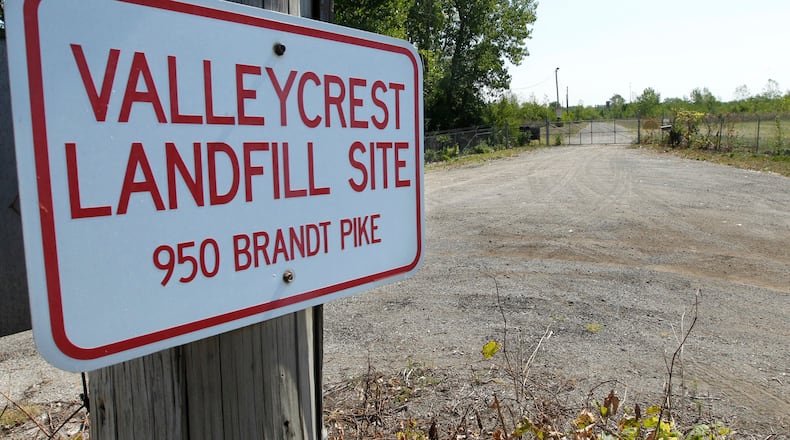The companies include General Motors, NCR Corp. and Waste Management.
RELATED: Clean-up of toxic landfill enters final phases
From 1998 through 2004, the EPA hauled away nearly 43,000 drums and containers of hazardous waste and excavated more than 65,000 cubic yards of contaminated soil and waste material, but an estimated 2.5 million cubic remained.
The landfill sits above the Great Miami Buried Valley Aquifer, which is the source of water for most of Montgomery County residents. When the landfill operated, the EPA said, it took in industrial waste including used oil, solvents, scrap paint, lampblack, electrical transformers, brake grindings — including asbestos — and sewage.
MORE: Dayton suing firefighting foam makers after water safety worries
The consent decree requires responsible parties to:
• Install a multi-layer cap over 70 acres,
• Install and operate a leachate extraction system to contain contaminated groundwater and prevent it from leaving the site, and
• Install and operate a permanent landfill gas collection system to replace the existing system.
PREVIOUS COVERAGE: Cleaning up landfill could cost up to $44 million, EPA says
The consent decree also requires controls at the site to ensure the long-term protections of human health and the environment. The agreement provides for a preliminary investigation to collect updated groundwater contaminant information that will be used in the design of the selected remedy. The preliminary data collection will be completed by fall 2019, and work on the cleanup design will begin shortly thereafter, according to the EPA
Prior to being used as landfill, the site was a sand-and-gravel quarry. Mining operations created large, unlined depressions across much of the site. The depressions were later used for disposal of commercial, industrial, municipal and other types of waste, according to the EPA.
Site records indicate that industrial and municipal wastes, including oils, solvents, scrap paper, electrical transformers, asbestos-containing brake grinders, and sewage were disposed in unlined former gravel pits that pond with water and intersected the water table.
In 1994, U.S. EPA added the site to the National Priorities List, a list of the most contaminated sites in the nation.
The consent decree was entered by the court on Oct. 30 but announced Wednesday.
About the Author

